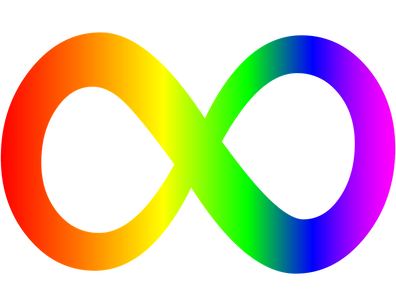|
As mentioned in a previous post, translinearity is a concept describing the fluidity of the linear and the non-linear, as they are combined in a unified framework. However, linear relationships are still valuable, particularly if you want to develop a robust model. It's just that the rigid classification between linear and non-linear is arbitrary and meaningless when it comes to such a model. To clarify this whole matter I started exploring it further and developed an interesting heuristic to measure the level of non-linearity on a scale that's intuitive and useful.
So, let's start with a single feature or variable. How does it fare by itself in terms of linearity and non-linearity? A statistician will probably tell you that this sort of question is meaningless since the indoctrination he/she has received would make it impossible to ask anything that's not within a Stats course's curriculum. However, the question is meaningful even though it's not as useful as the follow-up questions that can ensue. So, depending on the data in that feature, it can be linear, super-linear, or sub-linear, in various degrees. The Index of Non-Linearity (INL) metric gauges that and through the values it takes (ranging from -1 to 1, inclusive) we can assess what a feature is like on its own. Naturally, these scores can be easily shifted by a non-linear operator (e.g. sqrt(x) or exp(x)) while all linear operators (e.g. standard normalization methods) do not affect these scores. Also, at the current implementation of INL, the value of the heuristic is calculated using three reference points in the variable. Having established that, we can proceed to explore how a feature fares in relation to another variable (e.g. the target variable in a predictive analytics setting). Usually, the feature is used as the independent variable and the other variable as the dependent one, though you can explore the reverse relationship too, using this same heuristic. Interestingly the problem is not as simple now because the two variables need to be viewed in tandem. That's why all the reference points used shift if we change the order of the variables (i.e. the heuristic is not symmetric). Whatever the case, it is still possible to calculate INL with the same idea but taking into account the reference values of both variables. In the current implementation of the heuristic, the values can go a bit off-limits, which is why they are bound artificially to the [-1, 1] range. Naturally, metrics like INL are just the tip of the iceberg in this deep concept. However, the existence of INL illustrates that it is possible to devise heuristics for every concept in data science, as long as we are open to the possibilities the data world offers. Not everything has been analyzed through Stats, which despite its indisputable value as a data science tool, it is still just one framework, a singular way of looking at things. Fortunately, the data-scapes of data science can be viewed in many more ways leading to intriguing possibilities worth exploring.
0 Comments
Lately, I've been busy with preparations for my conference trips, hence my online absence. Nevertheless, I found time to write something for you all who keep an open mind to non-hyped data science and A.I related content. So, this time I'd like to share a few thoughts on programming for data science, from a somewhat different perspective. First of all, it doesn't matter that much what language you use, if you have attained mastery of it. Even sub-Julia languages can be useful if you know how to use them well. However, in cases where you use a less powerful language, you need to know about lambda functions. I mastered this programming technique only recently because in Julia the performance improvement is negligible (unless your original code is inefficient to start with). However, as they make for more compact scripts, it seems like useful know-how to have. Besides, they have numerous uses in data science, particularly when it comes to:
Another thing that I’ve found incredibly useful, and which I mastered in the past few weeks, is the use of auxiliary functions for refactoring complex programs. A large program is bound to be difficult to comprehend and maintain, something that often falls into the workload of someone else you may not have a chance to help out. As comments in your script may also prove insufficient, it’s best to break things down to smaller and more versatile functions that are combined in your wrapper function. This modular approach, which is quite common in functional programming, makes for more useful code, which can be reused elsewhere, with minor modifications. Also, it’s the first step towards building a versatile programming library (package). Moreover, I’ve rediscovered the value of pen and paper in a programming setting. Particularly when dealing with problems that are difficult to envision fully, this approach is very useful. It may seem rudimentary and not something that a "good data scientist" would do, but if you think about it, most programmers also make use of a whiteboard or some other analog writing equipment when designing a solution. It may seem like an excessive task that may slow you down, but in the long run, it will save you time. I've tried that for testing a new graph algorithm I've developed for figuring out if a given graph has cycles (cliques) in it or not. Since drawing graphs is fairly simple, it was a very useful auxiliary task that made it possible to come up with a working solution to the problem in a matter of minutes. Finally, I discovered again the usefulness of in-depth pair-coding, particularly for data engineering tasks. Even if one's code is free of errors, there are always things that could use improvement, something that can be introduced through pair-coding. Fortunately, with tools like Zoom, this is easier than ever before as you don't need to be in the same physical room to perform this programming technique. This is something I do with all my data science mentees, once they reach a certain level of programming fluency and according to the feedback I've received, it is what benefits them the most. Hopefully, all this can help you clarify the role of programming in data science a bit more. After all, you don't need to be a professional coder to make use of a programming language in fields like data science. |
Zacharias Voulgaris, PhDPassionate data scientist with a foxy approach to technology, particularly related to A.I. Archives
April 2024
Categories
All
|


 RSS Feed
RSS Feed